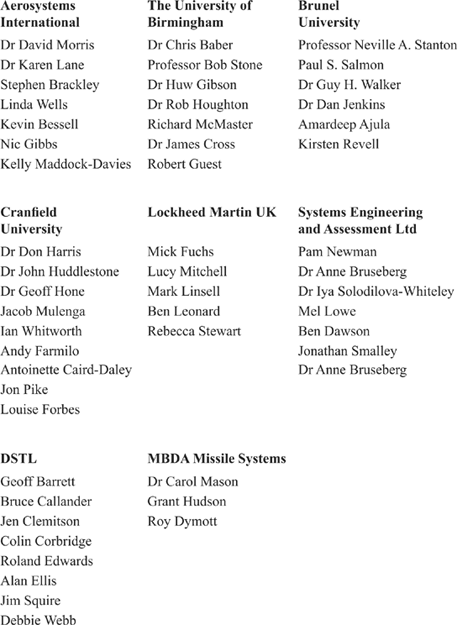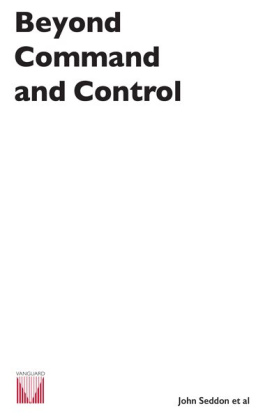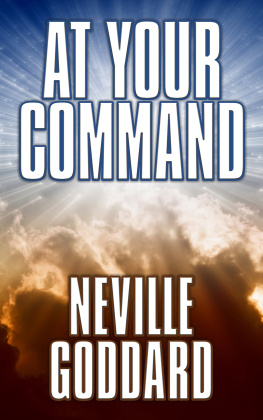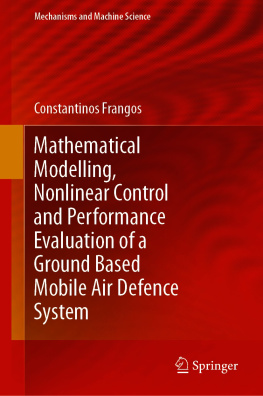Neville A. Stanton - Modelling Command and Control
Here you can read online Neville A. Stanton - Modelling Command and Control full text of the book (entire story) in english for free. Download pdf and epub, get meaning, cover and reviews about this ebook. year: 2008, publisher: Ashgate Publishing Limited, genre: Home and family. Description of the work, (preface) as well as reviews are available. Best literature library LitArk.com created for fans of good reading and offers a wide selection of genres:
Romance novel
Science fiction
Adventure
Detective
Science
History
Home and family
Prose
Art
Politics
Computer
Non-fiction
Religion
Business
Children
Humor
Choose a favorite category and find really read worthwhile books. Enjoy immersion in the world of imagination, feel the emotions of the characters or learn something new for yourself, make an fascinating discovery.

- Book:Modelling Command and Control
- Author:
- Publisher:Ashgate Publishing Limited
- Genre:
- Year:2008
- Rating:4 / 5
- Favourites:Add to favourites
- Your mark:
- 80
- 1
- 2
- 3
- 4
- 5
Modelling Command and Control: summary, description and annotation
We offer to read an annotation, description, summary or preface (depends on what the author of the book "Modelling Command and Control" wrote himself). If you haven't found the necessary information about the book — write in the comments, we will try to find it.
Modelling Command and Control — read online for free the complete book (whole text) full work
Below is the text of the book, divided by pages. System saving the place of the last page read, allows you to conveniently read the book "Modelling Command and Control" online for free, without having to search again every time where you left off. Put a bookmark, and you can go to the page where you finished reading at any time.
Font size:
Interval:
Bookmark:
MODELLING COMMAND AND CONTROL
Event Analysis of Systemic Teamwork
NEVILLE A. STANTON
CHRIS BABER
DON HARRIS
Human Factors Integration Defence Technology Centre

ASHGATE
Neville A. Stanton, Chris Baber and Don Harris 2008
All rights reserved. No part of this publication may be reproduced, stored in a retrieval system or transmitted in any form or by any means, electronic, mechanical, photocopying, recording or otherwise without the prior permission of the publisher.
Neville A. Stanton, Chris Baber and Don Harris have asserted their moral right under the Copyright, Designs and Patents Act, 1988, to be identified as the authors of this work.
Published by
Ashgate Publishing Limited
Gower House
Croft Road
Aldershot
Hampshire GU11 3HR
England
Ashgate Publishing Company
Suite 420
101 Cherry Street
Burlington, VT 05401-4405
USA
Ashgate website: http://www.ashgate.com
British Library Cataloguing in Publication Data
Stanton, Neville, 1960
Modelling command and control : event analysis of systematic teamwork. - (Human factors in defence)
1. Command and control systems - Simulation methods
2. Command of troops - Simulation methods
I. Title II. Baber, Christopher, 1964- III. Harris, Don, 1961-355.33041
Library of Congress Cataloging-in-Publication Data
Stanton, Neville, 1960
Modelling command and control : event analysis of systemic teamwork / by Neville A.
Stanton, Chris Baber and Don Harris.
p. cm. -- (Human factors in defence)
Includes bibliographical references and index.
ISBN 978-0-7546-7027-8
1. Command and control systems. 2. Command and control systems--Data processing. I. Baber, Christopher, 1964- II. Harris, Don, 1961- III. Title.
UB212.S72 2008
355.33041011--dc22
2007030959
ISBN: 978-07546-7027-8
ISBN: 978-14094-8570-4 (ebk-ePUB)

Printed and bound in Great Britain by MPG Books Ltd, Bodmin, Cornwall.
Readers of this book might be interested to know something of the genesis of ideas and projects that led to its conception. The basic idea to develop a new approach to the analysis and representation of command and control began early in 2002, when we decided to form a consortium to bid for the Ministry of Defence research contract for a Human Factors Integration Defence Technology Centre (HFI DTC). At that time there was a paradigm shift in defence research spending, with the desire to set up consortia based on collaboration between academia and industry. We formed a consortium led by Aerosystems International, with Birmingham, Brunel and Cranfield Universities together with Lockheed Martin, MBDA and SEA. In the competitive tendering process, we had to develop a set of research ideas that would define the work of the consortium for three years, from 2003 to 2006. One of the strands of work focused on Command and Control. Part of this work was to be focused on the analysis of military Command and Control using a new approach (which was to be developed). Because part of the remit of the HFI DTC was to examine spin-in to the defence domain from the civil sector (and vice versa), we looked at Command and Control in the emergency services and other civil applications. However, this book focuses almost exclusively on research in the military domain.
As history testifies, we were successful in winning the initial HFI DTC contract and have also won a follow on contract, which takes our programme of research from April 2003 to March 2009. From those humble beginnings in 2002, we have developed a new approach to the description and analysis of Command and Control called Event Analysis of Systemic Team-work (EAST) as well as a sister method called Workload, Error, Situation awareness, Time and Team-work (WESTT). This book presents the EAST method and applications of the method in the Navy, Air Force and Army Command and Control. EAST brings together a collection of Human Factors methods in an integrated manner, rather than developing completely new methods from scratch. The novelty of the approach is in the way in which the various methods have been integrated and the network models that the application of the methods produce as outputs. These models enable the analyst to consider the Command and Control system under scrutiny in terms of the task, social and knowledge networks, as well as the inter-relations between these networks.
At the time of writing the HFI DTC comprises:

This book may be approached in different ways by different readers. For an overview of the entire book, read chapter one. For those wishing to get to grips with the modelling literature, read chapter two for a review and chapter seven for our own Command and Control model. Those readers that want to apply the EAST method to their domain, we recommend reading chapter three plus one of the case studies in chapters four, five or six. For those readers who want to understand some aspects of Command and Control in the military domain, read chapters four, five and six. We have tried to write the book so that each of the chapters can stand alone, but inevitably there is some inheritance from previous chapters, which may require the reader to dip in and out to make the most of each chapter. The index section should help guide the reader.
The research work and spirit of the HFI DTC is such that collaboration between all of the organisations was integral to our approach, combining the best mix of academic and industrial knowledge and skills. We have learnt a lot about the military and about collaborating in this new approach to research funding in the Ministry of Defence. The willingness to participate and the can-do attitude of our Armed Forces is inspiring. We are very grateful, in particular, to the personnel at HMS Dryad in Portsmouth, CASTT at the Land Warfare Centre in Warminster and the E3D Sentry crews at RAF Waddington (8 and 23 Squadron) who have made this research possible. We hope that you, the reader, will find this book both useful and interesting in your own research endeavours. We have certainly enjoyed all of the experiences that have led to us bringing the fascinating area of Human Factors research onto the printed pages in front of you.
Neville A. Stanton
Chris Baber
Don Harris
The Human Factors Integration Defence Technology Centre is a consortium of defence companies and UK Universities working in cooperation on a series of defence related projects. The consortium is led by Aerosystems International and comprises Birmingham University, Brunel University, Cranfield University, Lockheed Martin, MBDA and SEA.
We are grateful to DSTL who have managed the work of the consortium, in particular to Geoff Barrett, Bruce Callander, Jen Clemitson, Colin Corbridge, Roland Edwards, Alan Ellis, Jim Squire and Debbie Webb.
This work from the Human Factors Integration Defence Technology Centre was part-funded by the Human Sciences Domain of the UK Ministry of Defence Scientific Research Programme.
Next pageFont size:
Interval:
Bookmark:
Similar books «Modelling Command and Control»
Look at similar books to Modelling Command and Control. We have selected literature similar in name and meaning in the hope of providing readers with more options to find new, interesting, not yet read works.
Discussion, reviews of the book Modelling Command and Control and just readers' own opinions. Leave your comments, write what you think about the work, its meaning or the main characters. Specify what exactly you liked and what you didn't like, and why you think so.






